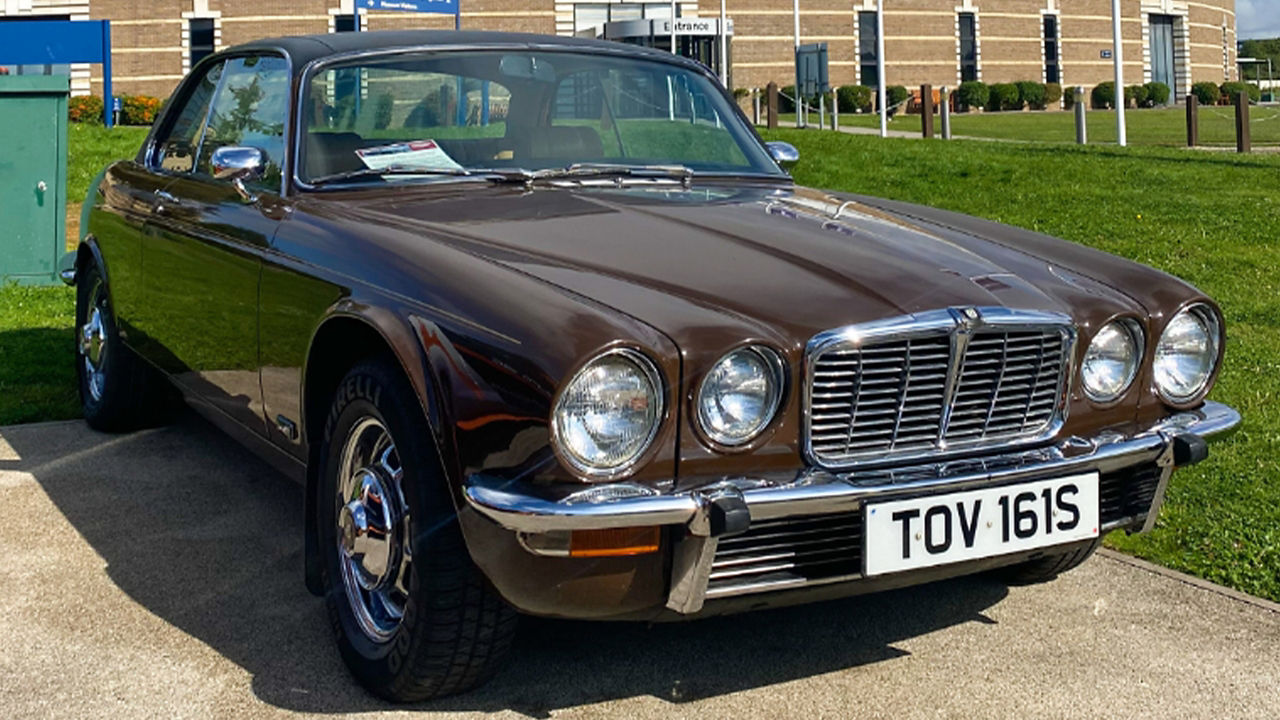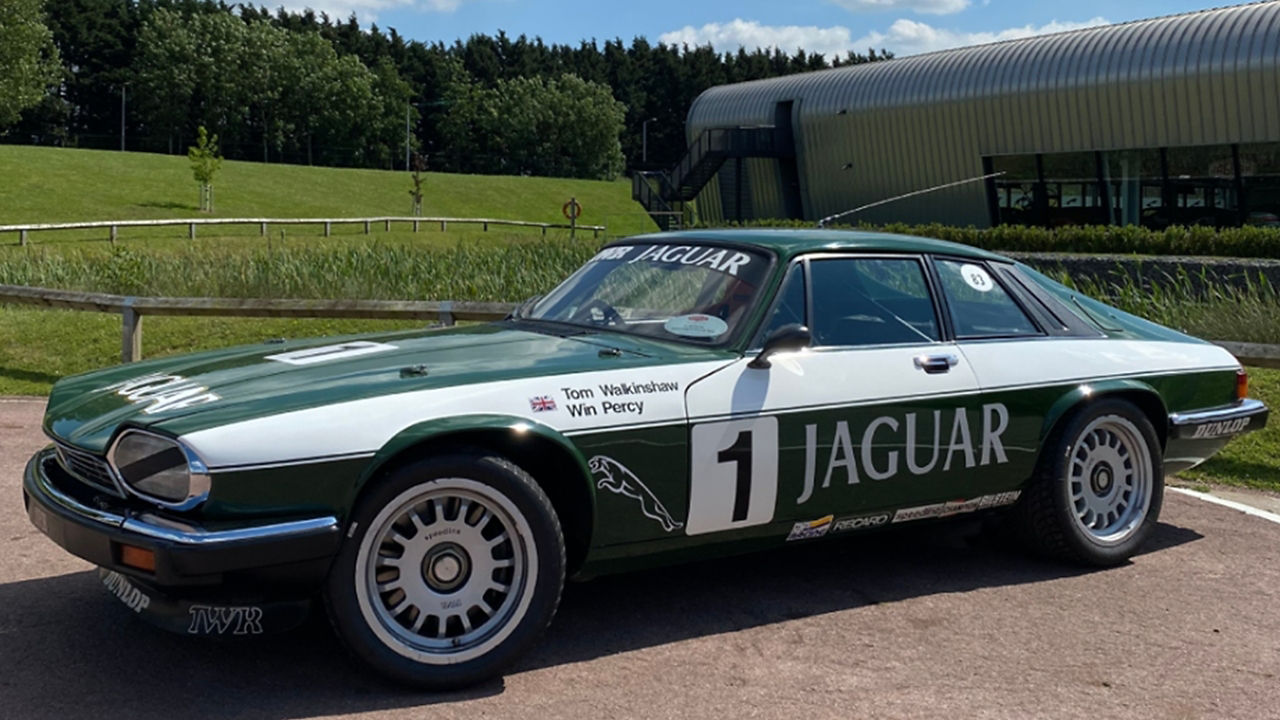THE XJ SERIES 1 AND 2 AND THE XJ-S
XJ Series 1 (1968)
Launched in September 1968, the XJ6 (for six cylinders), came with a choice of 2.8 litre or 4.2 litre XK engines.
The body of the XJ was new in every respect and was the pinnacle of the elegant Jaguar design which Sir William Lyons had refined over so many years. The new car was also notable for its suspension which chief engineer Bob Knight had developed to reach new standards of handling and road holding, coupled with remarkable passenger comfort.
Sir William Lyons had envisaged XJ as a saloon with the handling of an E-Type. Following its launch at the 1968 Paris Motor Show, the critics agreed – naming it ‘Car of the Year’.
The launch of the XJ6 on 26 September 1968 was very much a triumph for Jaguar and Sir William Lyons. He had worked long and hard on the model and it was very well-received by the press and public alike. The XJ6 was a typical Jaguar in offering value for money. At launch, the 4.2 litre car cost only £2,258, with a top speed of 124 mph (200 km/h).
The car was an instant success, and for a few years there were lengthy waiting lists. In its original Series 1 form, the XJ range was produced until 1973, and total production amounted to 98,527 cars of all models.
In 1972, the Series 1 XJ12 became the fastest sedan in the world with a top speed of 140mph (225km/h), thanks to the new 5.3-litre V12 engine with 198kW (265hp) of power. Further, the introduction of a long wheelbase option for Series 1 added more space for the rear passengers in the XJ range.

1968 JAGUAR XJ6 SERIES 1 4.2 LITRE (PHP 42G)
FOR THE FIRST TWO YEARS OF ITS LIFE - SIR WILLIAM LYONS PERSONAL TRANSPORT
XJ Series 2 (1973)
The Series 2 model of the successful XJ6 and XJ12 range was introduced in 1973 and continued in production until early 1979. The revised range featured new bumpers and radiator grilles compared with the original Series 1 models. From 1974, Series 2 saloons were only built on the longer wheelbase, and the 2.8 litre engine was discontinued except for a small numbers of export cars.
XJ Series 2 Coupe (1975) – The XJC
The idea of making a two-door pillarless version of the XJ saloon had surfaced very early in the car’s development as Jaguar became aware of the growing American market for hardtop cars in the 1960s. Indeed, early XJ6 styling models were all two-door cars.
However, it took a long time for the idea to reach fruition, and two-door XJs were only revealed in 1973, as part of the revised Series 2 range and didn’t go on sale until 1975.
Built on the short wheelbase floorpan from the original Series 1 saloon, the distinguishing feature of the two-door coupé was the pillarless window style with no doorframe or B-post. The doors were four inches longer than the standard saloon front doors. Further changes included folding front seats to allow access to the rear. All production coupés featured a black vinyl roof covering, and the XJC badging on the boot lid.
Mechanically, the coupés were similar to their saloon sisters, offering a choice of either the 4.2 litre XK engine, or the 5.3 litre V12 engine. There were also Daimler versions of both cars, under the Sovereign and Double Six names.
In 1976-77, the V12 coupé was the basis for the short-lived Leyland Broadspeed effort in European Touring Car racing. Production of the XJC ceased on 8 November 1977.

XJC SERIES 2 4.2 LITRE

LEYLAND BROADSPEED XJC V12 COUPÉ
XJ-S (1975)
By the mid-1970s, it was a priority for Jaguar to replace the E-type, which went out of production in 1974. The development of its successor had started as early as 1966, with Malcolm Sayer designing the first prototypes before his sudden death and William Heynes heading the development before his retirement.
Design work was completed by Doug Thorpe and the all-new XJ-S was unveiled at the 1975 Frankfurt Motor Show. The XJ-S represented a new step forward for Jaguar as the company’s first model in the International Grand Touring class, competing with the finest cars on offer from German and Italian manufacturers, yet at £8,900, offering traditional Jaguar value for money.
With the new model built on a shortened floorpan from the XJ saloon range, and the suspension and other chassis parts also being similar, it had the same unique combination of refinement, comfort and handling as other Jaguars, developed by chief engineer Bob Knight.
The engine was the 5.3 litre V12, which developed 285 bhp and gave the car a top speed of 142 mph (229 km/h). Although the styling was controversial, the XJ-S was the last car to show the influence of Sir William Lyons and Malcolm Sayer, the aerodynamicist, who had shaped the C, D and E-types. The flying buttresses at the rear had been intended for a still-born project for a mid-engined road car, based on the XJ13 of the 1960s.

1984 TWR XJ-S GROUP A EUROPEAN TOURING CAR CHAMPIONSHIP WINNER
In the early 1980s Jaguar contemplated a return to racing. Tom Walkinshaw had a fine track record with Rover, Ford, Mazda and BMW, and he approached Jaguar with a proposal to enter the European Touring Car Championship (ETCC) of 1982. The regulations prompted him to search for a car with the widest possible tyres and independent suspension. The XJ-S fitted the bill. Its fuel injection was also an advantage, due to restrictions on altering the engine intake manifold. It won its first race before the end of the season and came second in the championship.
The 1983 season was even better, as the Tom Walkinshaw Racing (TWR) Jaguar at one time led BMW with five wins to four, and only narrowly missed winning the championship.
A three-car team ran in the 1984 season, and this time, the Jaguars were unassailable. Of seven race victories, the most memorable was in the 24-hour race at Spa-Francorchamps in Belgium, by Walkinshaw and Win Percy – the first victory in a 24-hour race for Jaguar since the 1957 Le Mans. Walkinshaw won the championship, the first Jaguar driver to do so since Peter Nocker in 1963.
While TWR was then encouraged to develop a Le Mans winning Jaguar, the racing career of the XJ-S came to an end, with only a few more appearances in races in Australia and New Zealand in 1985 and 1987, highlighted by its famous victory at Bathurst in 1985.
